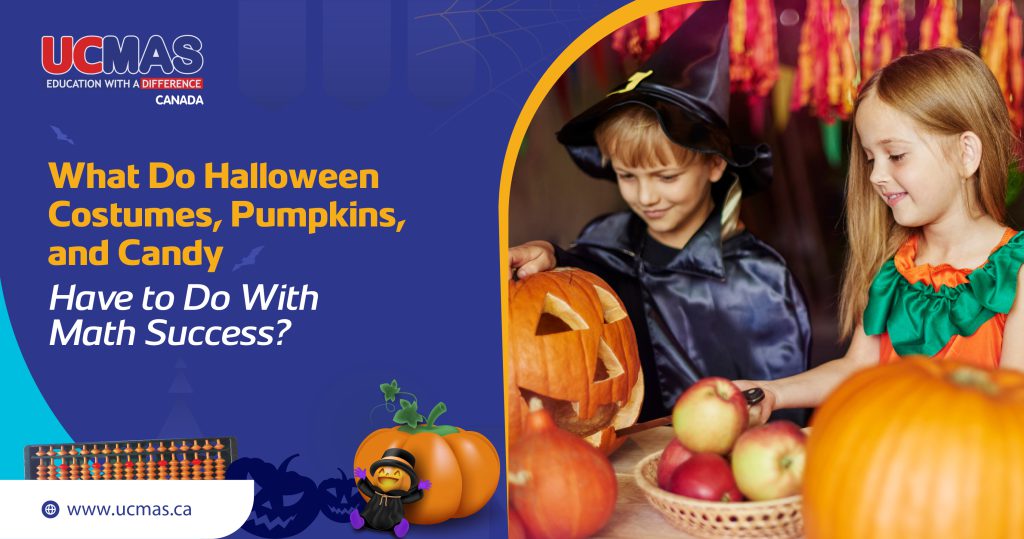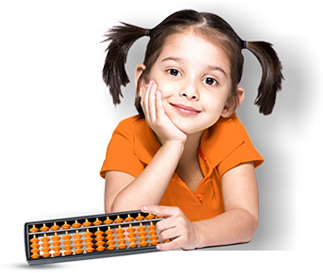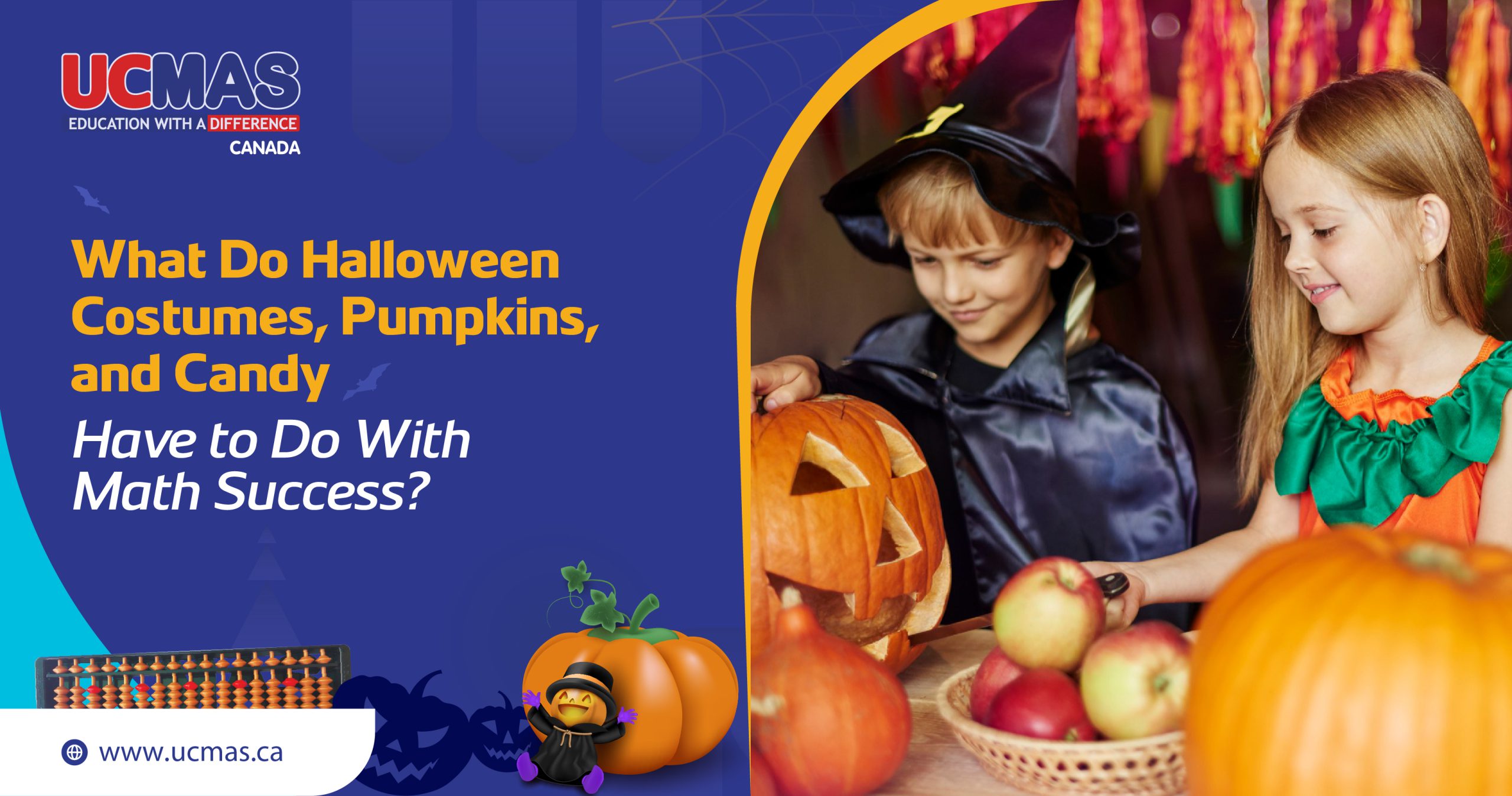
The candy count is on! Every Halloween, kids race to see who scored the biggest stash of candies, but what if all that counting and sorting could sneak in some math learning too? As you carve pumpkins and pick costumes, there’s a fun way to turn this spooky season into a playful math adventure.
At UCMAS, we believe learning math doesn’t always have to happen at a desk. Sometimes, it’s hidden inside a pumpkin, a trick-or-treat bag, or even a costume idea! So, this Halloween, while your kids are busy chasing treats, let’s sneak in a few clever ways to boost their brains, too.
1. Candy Sorting: The Sweetest Math Lesson
Before the sugar rush kicks in, spread out all the Halloween loot and let your child become a candy mathematician. Ask them to sort candies by type, color, or size; Snickers in one pile, lollipops in another, and gummies in their own little group. It’s an easy way to teach categorization, counting, and pattern recognition.
Want to level it up? Try making a quick “Candy Graph.” Draw simple bars on paper and let your child fill them in based on how many of each candy they have. Suddenly, you’re teaching data visualization in the sweetest way possible.
Now, turn it into a mini mental math game: “If you eat 3 chocolates from your 12, how many are left?” or “If you share half with your sibling, how many do you both get?” It’s the kind of learning that feels like play, and that’s the best kind there is.
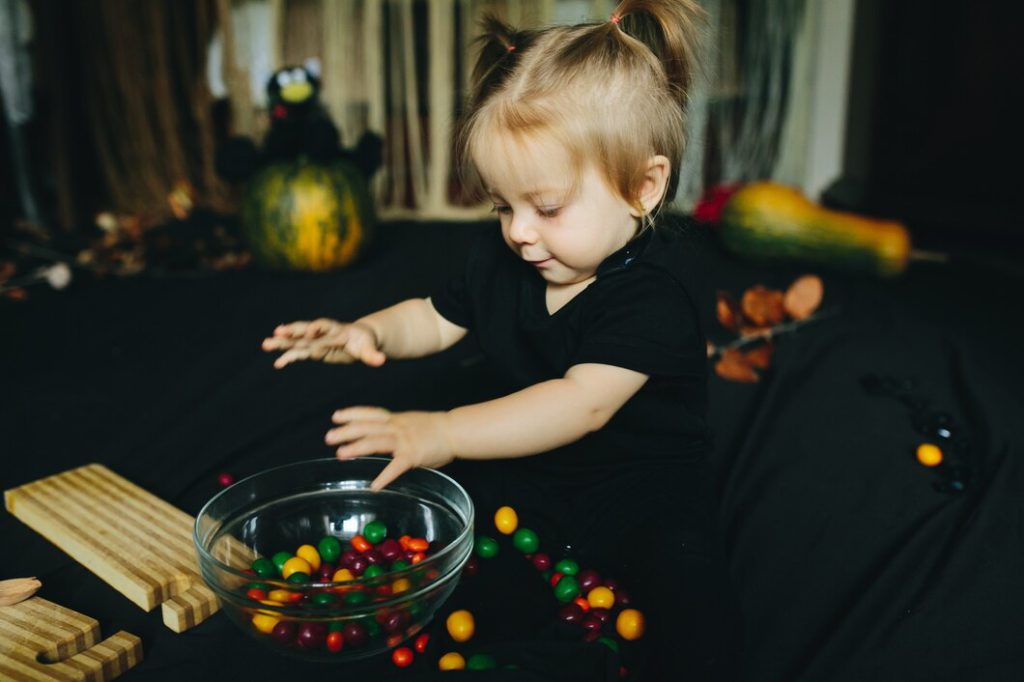
2. Pumpkin Patterns and Estimation Fun
Pumpkin carving isn’t just creative, it’s mathematical too! Ask your child to estimate how many seeds are inside before you scoop them out. Then count and compare to see who came closest. It’s a mini lesson in estimation, comparison, and accuracy that feels like a friendly competition.
You can also create pumpkin patterns: line them up by size, draw repeating shapes, or paint sequences like orange-black-orange-black. These small activities help children spot regularities and patterns, which later form the foundation of advanced math concepts.
Even measuring the pumpkin’s height or circumference using a ruler or thread becomes a simple geometry exercise. Suddenly, the kitchen table becomes a math lab, and your child is the curious scientist.
If your child enjoys creative math games like this, check out our blog on lighting up the Math-o-Lantern and shooing away the math fear. It’s all about making numbers less scary and more fun!
3. Trick-or-Treat Budget Challenge
Money lessons don’t have to wait till your child is a teen. Halloween is the perfect time to start! A simple budgeting game can teach kids how to make choices, compare costs, and plan, all while having fun. Give them a “pretend” $10 Halloween budget and let them decide how to spend it wisely or save a little for next year’s costume.
| Item | Estimated Cost ($) | Math Challenge | Lesson Learned |
| Candy Mix Pack | 3 | If you buy two packs, how much will you spend? | Addition & Multiplication |
| Pumpkin Decoration Kit | 2 | You have $10, how much will you have left after buying this? | Subtraction & Budgeting |
| Glow Stick Set | 1 | What’s the total if you buy 3 sets? | Multiplication & Grouping |
| Costume Accessory | 4 | Can you buy this and still afford a candy mix pack? | Decision Making |
| Savings Jar | — | How much can you save if you skip one item? | Financial Awareness |
Once they fill in their “purchase plan,” ask them to explain their choices. That’s where the real learning happens. They’ll start to see that math isn’t just about numbers; it’s about making smart, everyday decisions.
4. Costume Math: Designing and Measuring Creativity
Crafting costumes at home is another goldmine for hidden math lessons. Whether your child is turning into a superhero, ghost, or pumpkin fairy, they’ll need to measure fabric lengths, count accessories, or divide decorations evenly.
Encourage them to estimate how much ribbon they’ll need or how many stickers they can fit on their cape. This teaches measurement, proportions, and fractions naturally without ever calling it “math homework.”
Want to make it even more fun? Ask your child to keep track of how long it takes to make each part of the costume. Congratulations, you’ve just introduced them to time management and sequencing!
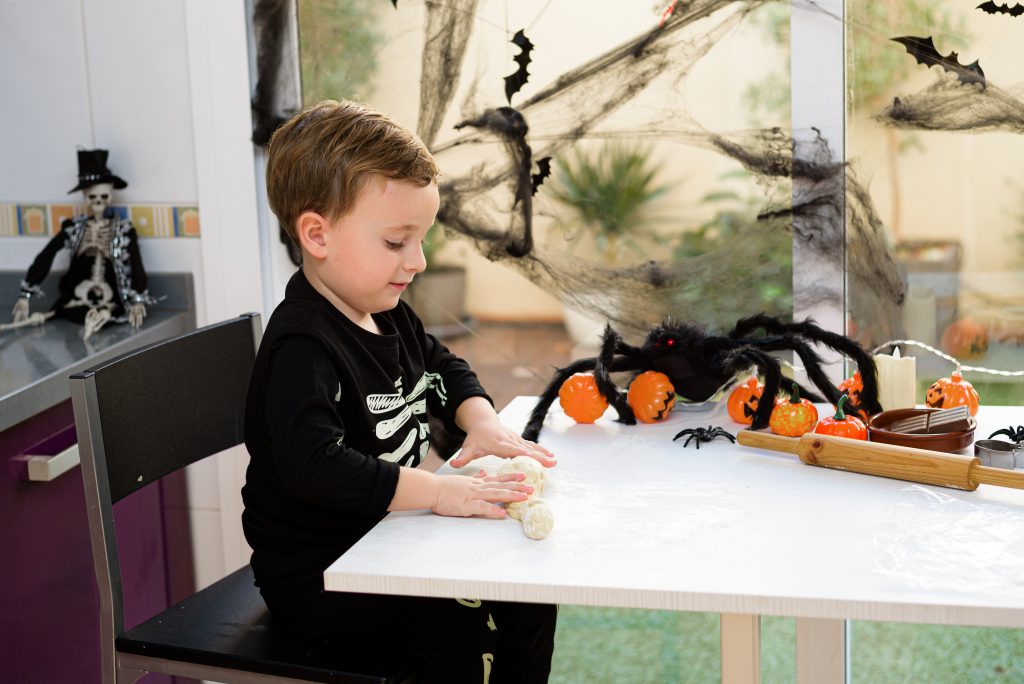
5. Halloween Night: A Math Adventure in Disguise
The learning doesn’t have to end when the trick-or-treating begins. As you walk door-to-door, you can turn the night into a mini mental challenge. Ask playful questions like, “If we visit five houses and get three candies from each, how many do we have now?” or “If we skip one street, how many houses are left?”
These quick questions strengthen mental math and logical reasoning, all while keeping the energy up between candy stops. Want to know how UCMAS helps kids build the same kind of mental agility all year round? It’s through their Abacus Mental Math Program, a tool that makes math visual, logical, and fun.
When Abacus Magic Meets Halloween
At UCMAS, we take the same idea of turning play into power and use it through abacus math. When kids use the abacus, they’re not just learning to calculate; they’re developing focus, memory, and visualization, all while having fun.
Even our youngest learners love watching numbers “move” like beads on their mental abacus. That’s why abacus learning fits perfectly into playful moments like Halloween, where imagination and logic meet halfway. We use orange and black beads for spooky-themed counting, or make children calculate how many candies they’d have “on the abacus” after each trick-or-treat stop.
If you are looking for more such ideas to make math a part of your child’s everyday life, we suggest you read about these best ways to enhance math skills in children.
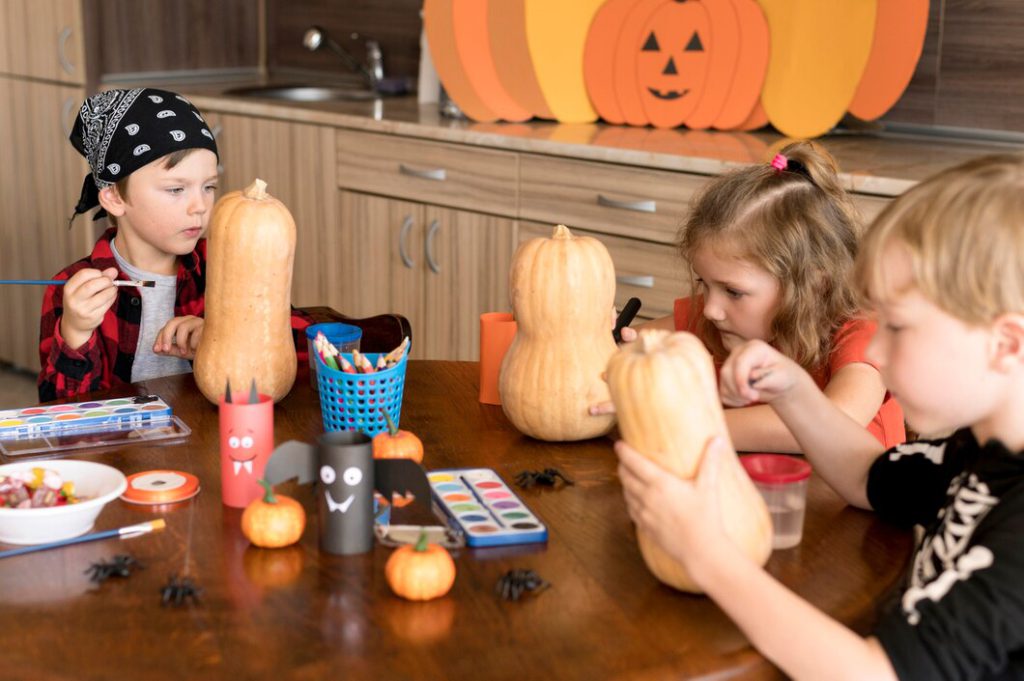
Math Feels Magical With UCMAS
At UCMAS, we believe the best learning happens when kids don’t even realize they’re “studying.” It’s when they’re curious, excited, and having fun, the same feeling they get carving pumpkins or dressing up for Halloween. In our UCMAS after-school program, children play with numbers, spot patterns, and discover that math isn’t scary, but creative, colorful, and full of wonder. Just like every pumpkin hides a surprise inside, every child has untapped potential waiting to shine through the right kind of learning.
Halloween may fade, but the curiosity and confidence we build in your child will last them a lifetime. Learn more about UCMAS or find a UCMAS centre near you and see how your child can fall in love with math the fun way!
FAQs
1. How can Halloween activities actually improve my child’s math skills?
Halloween-themed games use counting, patterns, and problem-solving in ways that feel like play, not study. This hands-on approach helps children apply math naturally and remember it better.
2. What age group benefits most from Halloween math activities?
Kids between 4 to 12 years old enjoy these activities the most because they mix imagination with simple math concepts. The best part? You can easily adjust the difficulty for your child’s age and skill level.
3. Can abacus math be combined with fun seasonal learning like Halloween themes?
Absolutely! Abacus math already focuses on visualization and creative problem-solving — Halloween themes just add excitement and context, keeping kids curious and engaged.
4. How are UCMAS abacus classes different from regular math worksheets?
Instead of memorization, UCMAS uses visualization and brain training techniques to strengthen both sides of the brain. Children learn faster and develop a lifelong love for numbers through interactive practice.
5. How can parents create simple Halloween math games at home?
Start with what you have: candy, pumpkins, or decorations — and turn them into counting, sorting, or budget challenges. The goal is to keep math practical and fun, not perfect or formal.
6. Are afterschool programs like UCMAS really helpful for building confidence in math?
Yes, because they remove the pressure of grades and focus on curiosity-based learning. Kids learn to see math as a puzzle to solve, not a problem to fear.
7. How do I find a good abacus class near me after Halloween?
Search for abacus classes near me and look for programs that balance structured teaching with creativity. Many UCMAS centers offer free info sessions, so you can experience their approach firsthand.
8. What makes UCMAS programs special during festive seasons like Halloween?
UCMAS keeps learning alive year-round with creative twists that make math exciting. Even during holidays, kids continue developing focus, memory, and logical skills without missing out on fun.



